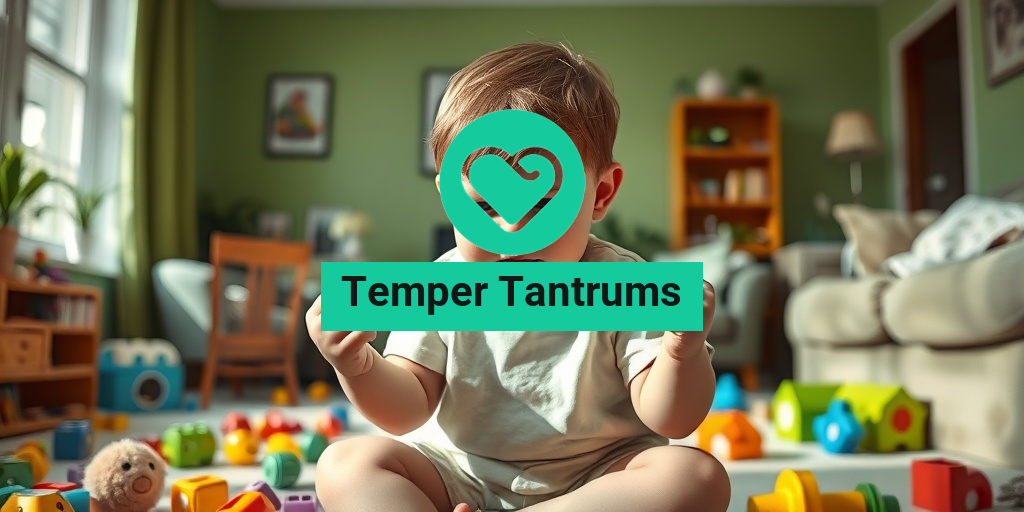What Are Temper Tantrums?
Temper tantrums are intense emotional outbursts that can occur in both children and adults. They often manifest as crying, screaming, kicking, or even throwing objects. While they are most commonly associated with toddlers and young children, adults can also experience these outbursts, albeit for different reasons. Understanding the meaning of temper tantrums is crucial for managing them effectively.
The Developmental Context
In young children, particularly those aged 1 to 5 years, tantrums are a normal part of development. During this stage, children are learning to express their emotions but often lack the verbal skills to communicate their feelings effectively. This frustration can lead to tantrums as a way to express their needs or desires. For instance, a temper tantrum in a 3-year-old might occur when they are unable to articulate their wish for a toy or snack.
Temper Tantrums in Adults
While less common, temper tantrums in adults can occur, often triggered by stress, frustration, or overwhelming emotions. Adults may express their anger through yelling, slamming doors, or even physical aggression. Recognizing these outbursts as a sign of underlying issues is essential for addressing the root causes and finding healthier coping mechanisms.
Common Triggers
Understanding the common triggers of temper tantrums can help in managing and preventing these emotional outbursts. Here are some of the most frequent causes:
- Frustration: When children or adults feel overwhelmed or unable to achieve a goal, it can lead to a tantrum. For example, a temper tantrum in a 4-year-old might occur when they can’t complete a puzzle.
- Hunger: Low blood sugar can significantly affect mood and behavior. A hungry child or adult may be more prone to emotional outbursts.
- Fatigue: Lack of sleep can lead to irritability and increased sensitivity to stressors, making tantrums more likely.
- Overstimulation: Too much noise, activity, or sensory input can overwhelm individuals, leading to a meltdown.
- Changes in Routine: Sudden changes, such as moving to a new home or starting a new school, can trigger anxiety and tantrums.
Identifying Triggers in Children
For parents and caregivers, recognizing the specific triggers of temper tantrums in children is vital. Keeping a journal of when tantrums occur can help identify patterns and potential causes. For instance, if a child frequently has tantrums after playdates, it may indicate they are feeling overwhelmed or exhausted.
Managing Triggers in Adults
For adults, managing triggers involves self-awareness and emotional regulation. Techniques such as deep breathing, mindfulness, and taking a break can help mitigate the risk of an emotional outburst. If you find yourself struggling with frequent tantrums, consider seeking support from a mental health professional or resources like Yesil Health AI for evidence-based strategies.
Conclusion
Temper tantrums, whether in children or adults, are a natural expression of frustration and emotional distress. By understanding what they are and identifying common triggers, individuals can develop effective strategies to manage these outbursts. Remember, it’s essential to approach tantrums with empathy and patience, recognizing that they are often a sign of deeper emotional needs. For more insights and support on managing emotional health, visit Yesil Health AI for reliable information and resources. 🌟

Age and Tantrum Frequency
Temper tantrums are a common occurrence in early childhood, but their frequency and intensity can vary significantly depending on the child’s age. Understanding how age influences tantrum behavior can help parents and caregivers navigate these challenging moments more effectively.
Infants (0-1 Year)
During the first year of life, infants may not exhibit traditional temper tantrums as seen in older children. However, they can express frustration through crying, fussiness, or physical agitation. These reactions are often due to unmet needs, such as hunger, discomfort, or tiredness. At this stage, it’s crucial for caregivers to respond promptly to help the infant feel secure and understood.
Toddlers (1-3 Years)
The toddler stage is notorious for frequent temper tantrums. As children begin to assert their independence, they may struggle with their emotions and communication skills. Common triggers for tantrums in this age group include:
- Frustration: Toddlers often want to do things themselves but may lack the skills to succeed.
- Desire for Control: They may throw tantrums when they feel their autonomy is being challenged.
- Overstimulation: Too much noise or activity can lead to overwhelming feelings.
It’s not uncommon for tantrums to occur multiple times a day during this phase, especially when children are tired or hungry. Parents can help by providing a structured environment and recognizing signs of fatigue or hunger before they escalate into a tantrum.
Preschoolers (3-5 Years)
As children enter preschool, tantrums may still occur but often become less frequent. By this age, many children start to develop better communication skills, allowing them to express their feelings more effectively. However, they may still have outbursts when:
- Feeling Overwhelmed: New experiences or changes in routine can trigger tantrums.
- Seeking Attention: Children may resort to tantrums to gain attention from parents or peers.
- Testing Boundaries: They may push limits to see how far they can go.
Parents can support preschoolers by encouraging emotional expression and teaching coping strategies, such as deep breathing or using words to describe feelings.
School-Aged Children (5+ Years)
By the time children reach school age, tantrums typically decrease significantly. However, some children may still experience emotional outbursts, especially in stressful situations. Factors that can contribute to tantrums in this age group include:
- Academic Pressure: Struggles with schoolwork can lead to frustration.
- Social Challenges: Difficulties with friends or peer relationships can trigger emotional responses.
- Changes in Routine: Transitions, such as moving to a new school, can be overwhelming.
At this stage, it’s essential for parents to model healthy emotional regulation and provide a safe space for children to express their feelings. Encouraging open communication can help children articulate their frustrations instead of resorting to tantrums.
Signs of a Tantrum
Recognizing the signs of a temper tantrum can help parents and caregivers intervene early and prevent escalation. Tantrums can manifest in various ways, and understanding these signs is crucial for effective management.
Physical Signs
Physical manifestations of a tantrum can include:
- Crying or Screaming: This is often the most noticeable sign, indicating distress.
- Flailing Arms and Legs: Children may throw themselves on the ground or kick in frustration.
- Clenching Fists: Tension in the body can signal anger or frustration.
Emotional Signs
Emotional indicators are equally important to recognize. These may include:
- Frustration: A child may show signs of agitation before a tantrum begins.
- Sadness: Tears may accompany feelings of helplessness or disappointment.
- Anger: A child may express anger verbally or through their actions.
Behavioral Signs
Behavioral changes can also signal an impending tantrum. Look for:
- Defiance: Refusing to follow instructions or comply with requests.
- Withdrawal: A child may become quiet or withdrawn before a tantrum.
- Increased Sensitivity: A child may react strongly to minor frustrations.
By being aware of these signs, parents can intervene early, offering comfort or distraction before a full-blown tantrum occurs. Understanding the triggers and signs of temper tantrums can lead to more effective strategies for managing these challenging behaviors. 🌈

How to Manage Tantrums
Temper tantrums are a common occurrence in children, especially during their early developmental stages. Understanding how to manage these outbursts can make a significant difference in both the child’s behavior and the parent’s stress levels. Here are some effective strategies to help you navigate through these challenging moments.
Recognize the Triggers
One of the first steps in managing temper tantrums is to identify what triggers them. Common triggers include:
- Hunger: A hungry child is often a cranky child. Ensure your little one has regular meals and snacks.
- Tiredness: Lack of sleep can lead to irritability. Establish a consistent bedtime routine.
- Overstimulation: Too much noise or activity can overwhelm a child. Create a calm environment when needed.
- Frustration: Children may throw tantrums when they can’t express their feelings or when they face challenges. Encourage them to communicate their needs.
Stay Calm and Collected
When a tantrum occurs, it’s crucial for parents to remain calm. Your reaction can either escalate or de-escalate the situation. Here are some tips:
- Take a deep breath: Before responding, take a moment to breathe and collect your thoughts.
- Use a soothing voice: Speak softly and reassuringly to your child, letting them know you are there for them.
- Don’t take it personally: Remember that tantrums are a normal part of child development and not a reflection of your parenting.
Provide Choices
Sometimes, children throw tantrums because they feel powerless. Offering choices can help them regain a sense of control. For example:
- “Would you like to wear the red shirt or the blue shirt?”
- “Do you want to play with blocks or read a book?”
By giving them options, you empower them and reduce the likelihood of a tantrum. 🌈
Implement a Distraction Technique
Distraction can be a powerful tool in managing temper tantrums. When you notice the signs of an impending tantrum, try to redirect their attention. Here are some effective distraction techniques:
- Change the environment: Move to a different room or go outside for a change of scenery.
- Introduce a new activity: Engage them in a fun game or craft project.
- Use humor: A silly face or funny dance can lighten the mood and shift their focus.
Effective Parenting Strategies
Managing temper tantrums requires a proactive approach. Here are some effective parenting strategies that can help you reduce the frequency and intensity of these outbursts.
Establish Routines
Children thrive on routine. Establishing a daily schedule can provide them with a sense of security and predictability. Consider the following:
- Consistent meal times: Regular meals can help prevent hunger-related tantrums.
- Structured playtime: Designate specific times for play, learning, and relaxation.
- Regular sleep schedule: Ensure your child gets enough rest by sticking to a consistent bedtime.
Teach Emotional Regulation
Helping your child learn to express their emotions in a healthy way can significantly reduce tantrums. Here are some strategies:
- Label emotions: Teach your child to identify and name their feelings, such as “angry,” “sad,” or “frustrated.”
- Model appropriate responses: Show them how to handle disappointment or frustration calmly.
- Encourage deep breathing: Teach them to take deep breaths when they start to feel overwhelmed.
Positive Reinforcement
Recognizing and rewarding good behavior can encourage your child to express themselves without resorting to tantrums. Consider these tips:
- Praise efforts: Acknowledge when your child handles a situation well or expresses their feelings appropriately.
- Use a reward system: Implement a sticker chart or small rewards for positive behavior.
By employing these strategies, you can create a more harmonious environment for both you and your child, making temper tantrums easier to manage. Remember, patience and consistency are key! 🌟

When to Seek Help
Temper tantrums are a common part of childhood development, especially in toddlers and young children. However, there are times when these outbursts may indicate a deeper issue that requires professional intervention. Understanding when to seek help can make a significant difference in your child’s emotional well-being and development.
Recognizing the Signs
While occasional temper tantrums are normal, certain signs may suggest that it’s time to consult a professional:
- Frequency and Intensity: If your child experiences tantrums multiple times a day or if the intensity of the outbursts is extreme, it may be a cause for concern.
- Duration: Tantrums that last longer than 15-20 minutes can be a sign of underlying issues.
- Physical Aggression: If your child exhibits aggressive behavior towards themselves or others during a tantrum, it’s essential to seek help.
- Impact on Daily Life: If tantrums interfere with your child’s ability to participate in daily activities, such as school or playdates, it may be time to consult a professional.
- Developmental Delays: If you notice that your child is not meeting developmental milestones alongside frequent tantrums, this could indicate a need for evaluation.
Consulting Professionals
If you observe any of the above signs, consider reaching out to a pediatrician or child psychologist. They can provide valuable insights and recommend strategies tailored to your child’s needs. Early intervention can help address potential behavioral issues and support your child in developing healthier emotional regulation skills.
Long-Term Effects of Tantrums
Understanding the long-term effects of temper tantrums is crucial for parents and caregivers. While many children outgrow these outbursts, persistent tantrums can lead to various emotional and behavioral challenges later in life.
Emotional Development
Frequent temper tantrums can impact a child’s emotional development in several ways:
- Difficulty Regulating Emotions: Children who frequently express anger through tantrums may struggle to manage their emotions as they grow older, leading to challenges in social situations.
- Increased Anxiety: Persistent tantrums can contribute to anxiety, as children may feel overwhelmed by their emotions and unsure of how to express themselves appropriately.
- Low Self-Esteem: If a child feels that they are often misunderstood or unable to control their emotions, it can lead to feelings of inadequacy and low self-esteem.
Social Implications
Long-term tantrums can also affect a child’s social interactions:
- Peer Relationships: Children who struggle with emotional regulation may find it challenging to form and maintain friendships, as peers may be put off by aggressive or unpredictable behavior.
- Academic Challenges: In school settings, children who have difficulty managing their emotions may face disciplinary actions or struggle to focus, impacting their academic performance.
Behavioral Issues
In some cases, children who frequently experience temper tantrums may develop behavioral issues as they grow older:
- Oppositional Defiant Disorder (ODD): This condition is characterized by a pattern of angry, irritable mood, argumentative behavior, and defiance toward authority figures.
- Conduct Disorder: In more severe cases, children may develop conduct disorder, which involves more serious behavioral issues, including aggression toward people and animals, destruction of property, and deceitfulness.
In conclusion, while temper tantrums are a normal part of childhood, being aware of when to seek help and understanding the potential long-term effects can empower parents to support their children effectively. By addressing these challenges early on, you can help your child develop healthier emotional regulation skills and foster positive social interactions. 🌟

Frequently Asked Questions about Temper Tantrums
What are temper tantrums?
Temper tantrums are emotional outbursts characterized by crying, screaming, and sometimes physical aggression. They are most commonly seen in young children as a way to express frustration or anger when they cannot communicate their needs effectively.
At what age do temper tantrums typically occur?
Temper tantrums are most prevalent in toddlers, particularly between the ages of 1 and 4 years old. However, they can also occur in older children and even in adults under stress.
How can I manage my child’s temper tantrums?
- Stay calm and composed during the outburst.
- Validate your child’s feelings by acknowledging their frustration.
- Set clear and consistent boundaries.
- Distract them with a different activity or toy.
- Teach them coping strategies for expressing their emotions.
Are temper tantrums normal in 5-year-olds?
Yes, temper tantrums in 5-year-olds can still occur, although they may be less frequent than in younger children. At this age, children are learning to manage their emotions better, but they may still have outbursts when overwhelmed.
What causes temper tantrums in toddlers?
Several factors can contribute to temper tantrums in toddlers, including:
- Frustration due to inability to communicate needs.
- Overstimulation or tiredness.
- Desire for independence.
- Changes in routine or environment.
Can adults experience temper tantrums?
Yes, temper tantrums in adults can occur, often manifesting as anger outbursts or frustration when faced with stress or overwhelming situations. It’s important for adults to find healthy coping mechanisms to manage their emotions.
How can I help my child cope with their emotions?
- Encourage open communication about feelings.
- Teach them deep breathing exercises.
- Model appropriate emotional responses.
- Provide a safe space for them to express themselves.
What should I do if my child’s tantrums become frequent?
If you notice that your child’s temper tantrums are becoming more frequent or intense, it may be helpful to consult with a pediatrician or child psychologist. They can provide guidance and support tailored to your child’s needs.
Are there cultural differences in how temper tantrums are viewed?
Yes, cultural attitudes towards temper tantrums can vary significantly. In some cultures, they may be seen as a normal part of child development, while in others, they may be viewed as a behavioral issue that needs correction.
When should I seek professional help for temper tantrums?
If your child’s tantrums are severe, last for an extended period, or are accompanied by other concerning behaviors, it may be time to seek professional help. A healthcare provider can assess the situation and recommend appropriate interventions.




